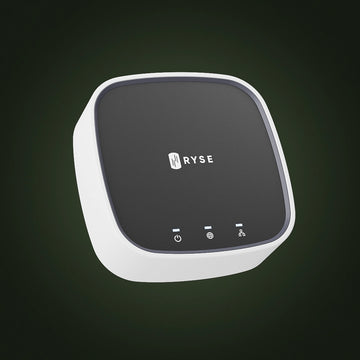We tend to think of naps as a lazy indulgence, something you sneak in on weekends or after a long flight. But done right, a nap isn’t a sign of weakness. It’s one of the most powerful, science-backed tools for boosting brain performance, emotional regulation, and physical recovery.
We'll explore how napping affects your health, when and how long to nap for maximum benefits, and how smart environments (like automated blinds and white noise) can transform your midday break into a mini-reset.
The Science-Backed Benefits of Napping
Short naps (10–30 minutes) can offer big rewards — without disrupting your nighttime sleep cycle.
Here’s what strategic naps can help you with:
-
Boost alertness and mental clarity
-
Improve memory and learning consolidation
-
Lower stress levels and improve mood
-
Enhance physical recovery and immune function
NASA research even found that pilots who napped for 26 minutes improved performance by 34% and alertness by 54%.
Naps allow the brain to reset without going into full sleep cycles, which helps avoid sleep inertia, the groggy, foggy feeling you get after napping too long.
Timing Matters: How to Nap Without Ruining Your Night
Ideal Nap Length
|
Nap Duration |
Benefit |
Considerations |
|
10–20 minutes |
Quick energy and focus boost |
Least likely to cause grogginess |
|
30 minutes |
Moderate refresh; may improve alertness |
May cause light sleep inertia |
|
60+ minutes |
Aids memory and learning |
Higher risk of grogginess if woken mid-cycle |
Best time to nap:
-
Between 1–3 p.m., when your body’s energy naturally dips
-
Not after 4 p.m., which may interfere with melatonin production and nighttime sleep
Nap Smarter, Not Longer
If you wake up groggy or find yourself napping too late in the day, adjust your environment and timing. Keep naps short, consistent, and aligned with your body’s rhythm.
You can also use naps to offset temporary sleep debt, like after travel, shift work, or a short night’s sleep, but don’t rely on them to fix chronic sleep deprivation.
Smart Environments Make Better Naps
To nap effectively, you need to create the right conditions quickly. That’s where smart sleep tools shine.
RYSE SmartShades
-
Block out sunlight instantly without fumbling with cords
-
Automate your nap schedule by programming shades to close during your rest window
Sound and noise masking
-
Use white noise machines or smart speakers with nature sounds to block disruptive noise
-
Consistent background sound helps your brain drop into a relaxed state faster
Temperature control
-
Smart thermostats can adjust your room to a cooler napping temperature (65–70°F or 18–21°C), promoting comfort without requiring full sleep preparation
A nap is more than just a break, it’s a tool to sharpen your mind, recharge your body, and reset your mood. With smart support from tools like RYSE SmartShades, calming soundscapes, and temperature control, you can make every nap intentional and effective.
Frequently Asked Questions (FAQs)
1. Can napping every day mess with my nighttime sleep?
Not if you keep naps short (10–30 minutes) and avoid late-day naps. Napping too long or too late can disrupt melatonin production.
2. What’s the best position for napping?
Resting slightly upright (like in a recliner or on a sofa) may help prevent deep sleep and sleep inertia, especially for shorter naps.







